Justin Taylor's Blog, page 24
May 10, 2019
Yale’s David Gelernter on Why “Darwin’s Doubt” Is One of the Most Important Books in a Generation
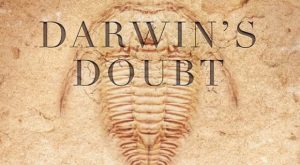
David Gerlenter—professor of computer science at Yale University and chief scientist at Mirror Worlds Technologies—has an excellent essay in the Spring 2019 issue of Claremont Review of Books explaining how Stephen Meyer’s book, Darwin’s Doubt, helped him think about Darwin’s theory in a new way.
Here is the opening of his 5,300-word essay (which is also available in ):
Darwinian evolution is a brilliant and beautiful scientific theory.
Once it was a daring guess.
Today it is basic to the credo that defines the modern worldview. Accepting the theory as settled truth—no more subject to debate than the earth being round or the sky blue or force being mass times acceleration—certifies that you are devoutly orthodox in your scientific views; which in turn is an essential first step towards being taken seriously in any part of modern intellectual life.
But what if Darwin was wrong?
Like so many others, I grew up with Darwin’s theory, and had always believed it was true.
I had heard doubts over the years from well-informed, sometimes brilliant people, but I had my hands full cultivating my garden, and it was easier to let biology take care of itself.
But in recent years, reading and discussion have shut that road down for good.
This is sad. It is no victory of any sort for religion. It is a defeat for human ingenuity. It means one less beautiful idea in our world, and one more hugely difficult and important problem back on mankind’s to-do list. But we each need to make our peace with the facts, and not try to make life on earth simpler than it really is.
Gerlenter writes:
There’s no reason to doubt that Darwin successfully explained the small adjustments by which an organism adapts to local circumstances: changes to fur density or wing style or beak shape. Yet there are many reasons to doubt whether he can answer the hard questions and explain the big picture—not the fine-tuning of existing species but the emergence of new ones. The origin of species is exactly what Darwin cannot explain.
Stephen Meyer’s thoughtful and meticulous Darwin’s Doubt (2013) convinced me that Darwin has failed. He cannot answer the big question.
He continues:
Darwin’s Doubt is one of the most important books in a generation. Few open-minded people will finish it with their faith in Darwin intact. . . . This is one of the most important intellectual issues of modern times, and every thinking person has the right and duty to judge for himself.
Gerlenter himself is Jewish and does not accept intelligent design. It is interesting that he makes this observation on intelligent design, religion, and the critics of ID:
The religion is all on the other side. Meyer and other proponents of I.D. are the dispassionate intellectuals making orderly scientific arguments.
Later in the essay Gerlenter notes:
Although Stephen Meyer’s book is a landmark in the intellectual history of Darwinism, the theory will be with us for a long time, exerting enormous cultural force. Darwin is no Newton. Newton’s physics survived Einstein and will always survive, because it explains the cases that dominate all of space-time except for the extreme ends of the spectrum, at the very smallest and largest scales. It’s just these most important cases, the ones we see all around us, that Darwin cannot explain. Yet his theory does explain cases of real significance. And Darwin’s intellectual daring will always be inspiring. The man will always be admired.
He now poses a final challenge. Whether biology will rise to this last one as well as it did to the first, when his theory upset every apple cart, remains to be seen.
How cleanly and quickly can the field get over Darwin, and move on?—with due allowance for every Darwinist’s having to study all the evidence for himself?
There is one of most important questions facing science in the 21st century.
Read the whole piece, which is a wonderfully clear overview of the issues.
You can find Meyer’s book here.
May 8, 2019
Stop Saying the Ancient Israelites Believed the Sky Was a Big Solid Dome with a Heavenly Sea Above It
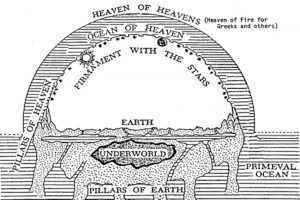
We all know that:
Ancient Near Eastern people believed that the sky was a strong solid dome or firmament, holding up heavenly waters above it.
This teaching is reflected in Genesis 1:6–8:
And God said, “Let there be an expanse in the midst of the waters, and let it separate the waters from the waters.” And God made the expanse and separated the waters that were under the expanse from the waters that were above the expanse. And it was so. And God called the expanse Heaven.
In his new book, Interpreting Eden, Vern Poythress argues that both of these premises are wrong.
We have no good evidence that people of the ancient Near East actually held this view.
And Genesis 1:6–8 does not teach or presuppose it.
Here’s a summary of his positive interpretation of that passage:
The “expanse” (רָקִיעַ) in Gen. 1:6-8 is the same as “heaven” (שָׁמַיִם, verse 8). Both words refer flexibly to what it above us. (The word heaven can also refer to the invisible dwelling of God with his angels.) Depending on the context and the weather and the time of day or night, we may see clouds (by day), sun in a blue sky, stars and sometimes the moon in a black night sky, and black sky when there is a cloud cover at night. In many contexts the word heaven (שָׁמַיִם) is roughly equivalent to our modern English word sky. We can comfortably speak of a cloudy sky, a blue sky, a fiery sky (at sunset), and a night sky. Likewise, the Hebrew term for heaven covers the same spectrum (1 Kings 18:45; Gen. 1:14-15).
The expression “waters that were above the expanse” primarily designates water above a cloudy sky, that is, water inside clouds, whose lower side is the sky. (But it is left open whether there is also invisible water.)
All this makes sense to an ancient Israelite as well as a modern reader with appropriate understanding of the point of view and kind of description that Gen. 1:6-8 offers. Gen. 1:6-8 gives us an ordinary description, a phenomenal description, a description of appearances, and does not offer any detailed “theory” about the expanse (“heaven”) or the water above it.
Genesis 1:6-8 becomes intelligible when we realize that it works with analogies between creation and our present experience of God’s providence in bringing rain.
From there he goes on to examine in some detailed the proffered parallel texts in ANE literature that supposedly show what the ancients believed, and shows how a physicalistic interpretation has been anachronistically imported into them, especially Genesis.
If a person expects physicalistic information in ancient mythic texts or in the Bible, he can “find” what he expects. But if we are not expecting an explanation in terms of physical mechanisms, we can approach the same passages in a different way: they are imagistic, colorful pictures. They are part of a larger pattern, according to which the Old Testament uses analogies between the cosmos and a house or a tent.
Poythress then offers nine principles that are at play in guiding how we should interpret a phrase like “the waters above”:
Israelites could be expected to have some knowledge about rain.
Old Testament passages show that Israelites knew that rain came from clouds.
Other materials from the ancient Near East confirm that people of that time were familiar with the idea of rain coming from clouds.
The Bible sometimes describes rain as coming from “heaven.”
The Bible uses language about the heavens being “shut” to describe a situation with lack of rain.
In a manner analogous to the heavens being “shut,” the Old Testament may describe rain as coming when the heavens are “opened.”
Israelites thought of dew as another form of provision of moisture “from heaven,” more or less parallel to rain.
In general, the Old Testament instructs Israelites about things that affect their lives.
Genesis 1 speaks about things relevant to Israelites.
Poythress concludes:
In Genesis 1 as a whole and in Genesis 1:6-8 in particular God speaks about acts of creation that not only evoke praise but have practical interest to human beings. Thus Genesis 1:6-8 is speaking about water above, such as Israelites received from clouds. The alleged heavenly sea is irrelevant, and so it must be rejected as not pertinent to interpreting 1:6-8.
In fact, introducing a heavenly sea creates interpretive problems rather than solving them. Once we acknowledge that Israelites knew that rain comes from clouds, a modern theory about the heavenly sea has to postulate not two bodies of water, but three: the sea on earth, the water inside the clouds, and the heavenly sea. It has to say, in effect, that Gen. 1:6-8 mentions the first and the third, even though the third is irrelevant, while leaving out the second, which is continually relevant for crops and for herds. May we ask whether this interpretation is plausible?
Finally, we may observe that an interpretation of Gen. 1:6-8 as a reference to a heavenly sea violates the key principle that Gen. 1 teaches about creation using analogies from providential experience. There is no providential experience of a heavenly sea, whereas there is providential experience of rain descending from clouds. The implausibility of the heavenly-sea interpretation increases because of its lack of contact with ordinary experience. In reality, the heavenly-sea interpretation imposes an alleged ancient quasi-scientific physicalistic theory of the heavenly sea on the text, which is just as bad as imposing on the text the expectation for modern scientific-technical precision.
Since we cannot go back and interview ancient Israelites, modern interpreters can always postulate that the Israelites had strange beliefs about a heavenly sea. Such postulates are likely to be around for a long time. The postulates have become embedded in the tradition of Old Testament scholarship. They seem at first glance to be supported by various ancient Near Eastern texts, at least if the texts are read physicalistically. The postulates are further sustained by the modern myths that make us complacent about our superiority to the ancients and patronizing toward their alleged primitive naiveté. But, if we are alert, we may entertain doubts. Whether or not the Israelites had strange beliefs, God does not address such beliefs directly, and neither does he presuppose them. He teaches that there is water above, separated from water beneath by an expanse. The language is sparse. If any ancient Israelites or modern interpreters do not realize that rain does indeed come from water above, that is their problem.
You can read the whole argument with extensive documented detail here.
May 6, 2019
The Greatest Archaeological Discovery of the 20th Century: An Interview with a Renowned Expert on the Dead Sea Scrolls

Since 1991, Weston W. Fields (PhD, Hebrew University) has been the executive director of the Dead Sea Scrolls Foundation as well as the director of Dead Sea Scrolls Publications. Brill has published his 600-page monograph, The Dead Seas Scrolls: A Full History, along with his The Dead Sea Scrolls: A Short History. Since 1999 he has traveled throughout the Middle East, Europe, and the United States, interviewing all of the first generation of Dead Sea Scroll scholars who were then still alive, including those who discovered scrolls in the 1950s or were the first to examine and reconstruct them.

The following interview is adapted with permission from an article he wrote for the Dead Sea Scroll Foundation website.
How significant was the discovery of the Dead Sea Scrolls?
The Dead Sea Scrolls are considered by many to be the single most important archaeological manuscript find of the 20th century.

How many documents are we talking about?
They represent more than 1,400 original documents, some complete or nearly complete (such as the Great Isaiah Scroll), but many quite fragmentary. There are about 100,000 fragments in all.
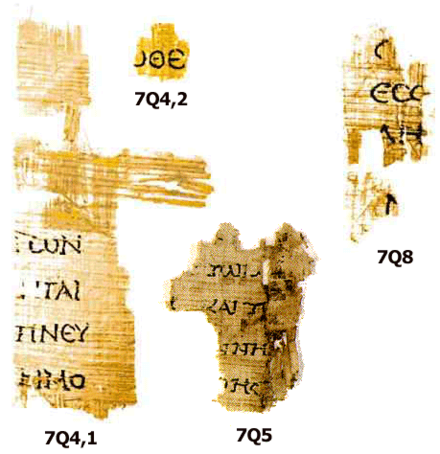
How big did the scrolls get?
Some of the larger scrolls stretch as long as 30 feet. The Isaiah scroll is approximately seven meters long (23 feet) and is made up of 17 parchment sheets, sewn end to end.

What are the scrolls made out of?
Most of the scrolls are made of dried animal skins (parchment).
What color are the skins?
The skins of most of the Dead Sea Scrolls are leather or parchment, light brown or yellowish in color. The finest scrolls are almost white.
How old are the scrolls?
The Qumran scrolls date from approximately 250 BC to about AD 65, and at some other locations to about AD 135.
How old were the oldest extant manuscripts before the discovery was made?
Before the discovery of the Dead Sea Scrolls, the oldest existing manuscripts of parts of the Hebrew Bible came from about AD 800–1000.
The oldest complete copy of the Hebrew Bible—the Leningrad (St. Petersburg) Codex—dates to AD 1008.
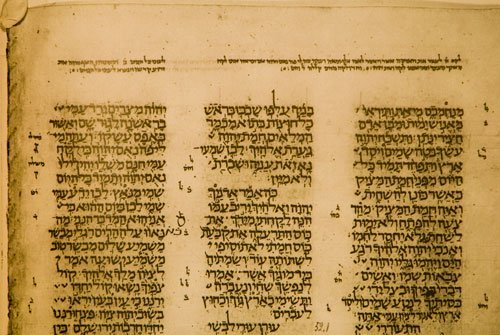
This means that the Dead Sea Scrolls provide us with texts of the Bible copied more than 1,000 years earlier than any others now in existence! In other words, the scrolls comprise, among other things, the oldest copies of parts of the Bible in existence.
It’s amazing the many of the scrolls stay preserved and didn’t decompose after that many centuries. How did that happen?
While many of the manuscripts have suffered the ravages of time, the ancient people who hid the scrolls in the caves sealed some of them in clay jars, often wrapped in linen covers to help preserve them.
The scrolls are believed to have been treated with salt and flour to remove the hair, and tanned with gall-nut liquid that was lightly brushed on or sprinkled over both surfaces of the skin. Most of the scrolls were written with carbon ink (powdered charcoal) which was fairly easy to erase.

What languages do we find on the DSS, and how were they written?
The Dead Seas Scrolls contain Hebrew, Aramaic, and Greek texts. They were written on the scrolls in columns.
Do the DSS contain the entire Old Testament? Are other writings included as well?
The scrolls contain all or part of every book of the Hebrew Bible (Old Testament)—with the exception of Esther.
They also include many non-biblical books, some previously known only in Greek or other languages, but now found in Hebrew.
There are also a number of previously unknown compositions.
Are there any complete books of the Bible found among the DSS?
The Isaiah Scroll is the only complete biblical book surviving among the Dead Sea Scrolls. It was found in Cave One at Qumran in 1947, and dates from about 120 BC.

How does the Isaiah School compare to the version of Isaiah we have in our Hebrew Bibles today?
The text of the scroll hardly differs from the version used today, demonstrating the degree to which the text of the Bible was faithfully transmitted over the centuries. Remarkably, the text of many of these Hebrew manuscripts has hardly changed over the course of 2,000 years.
How were the scrolls discovered?
The majority of the scrolls were discovered in caves along the western shore of the Dead Sea from 1947 to 1956. The most famous of these are the 11 caves near Qumran, where a community lived that some scholars identify as Essenes, a Jewish sect known to have existed elsewhere in Israel during the Second Temple period, which includes the time of Jesus.

Scrolls were also discovered at several other locations north and south of Qumran, and in the 1960s scrolls were unearthed during the excavation of Masada.
A few have been discovered during the past decade.
So what happened after the shepherds discovered the scrolls? Can you give us a rough timeline of some of the most significant events since that time?
The first seven scrolls came into the hands of dealers in antiquities who offered them to scholars.
The first to recognize their antiquity was Professor Eleazar Sukenik, father of Yigael Yadin, who succeeded in acquiring three of them for the Hebrew University. Between 1948 and 1950 he published specimens from them.
Sukenik recollected, “My hands shook as I started to unwrap one of them. I read a few sentences. It was written in beautiful biblical Hebrew. The language was like that of the Psalms, but the text was unknown to me. I looked and looked, and I suddenly had the feeling that I was privileged by destiny to gaze upon a Hebrew scroll which had not been read for more than 2,000 years.”
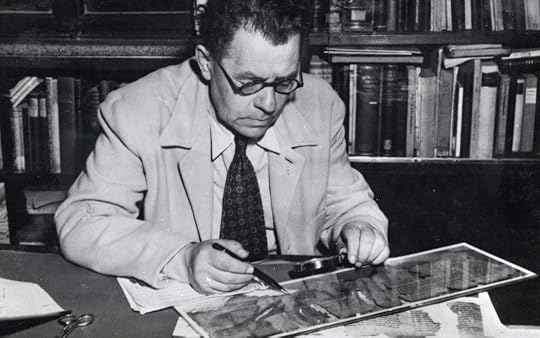
Four other scrolls were sold by the Bedouin to the Bethlehem antiquities dealer Kando, who in turn sold them to Mar Athaniasius Samuel, the Archbishop of the Syrian Orthodox Christian community. They were independently recognized as ancient and photographed by Dr. John Trever and Dr. William Brownlee in Jerusalem in 1948.
Mar Samuel brought them to the United States, where they were exhibited first in 1949.
The photographs of two were published in 1950: the Great Isaiah Scroll and the Commentary on Habakkuk.
Photographs of the Manual of Discipline were published in 1951.
Subsequently in 1954, the Government of Israel, with the help of a donation from Samuel Gottesman, purchased the scrolls, which are now housed in the Shrine of the Book in Jerusalem.

In 1949 Gerald Lankester Harding and Father Roland de Vaux excavated Qumran Cave 1 and found fragments from 70 more original scrolls.
Between 1951 and 1962 tens of thousands of additional scroll fragments were discovered, mostly by Bedouin, in 10 more caves near Qumran and in several other locations in the Judaean Desert. It has taken 60 years to publish this vast collection.
After the Six-Day War in 1967, Yadin obtained the Temple Scroll. As a result of the capture of East Jerusalem by Israel the major collections from Qumran Caves 2-11 and Wadi Murabba‘at in the Palestine Archaeological Museum (renamed in 1967 the Rockefeller Museum) in East Jerusalem came under the control of the Israel Department of Antiquities. The only major scroll not in Jerusalem was the Copper Scroll, which together with other scroll fragments was on display in Amman, Jordan. These are displayed today in the Jordan Museum.

While scholars wrestle with the contents of the scrolls, their antiquity is no longer in question. What is remarkable is that the text of many of these Hebrew manuscripts has hardly changed over the course of 2,000 years.
What can we learn from the scrolls? What effect does their discovery have upon biblical scholarship?
The scrolls have enabled scholars to gather an immense amount of information about how the Bible was written and how it was transmitted from generation to generation.
In many cases, the scrolls show a remarkable similarity to the text of the Hebrew Bible currently in use.
In some cases, differences between the scrolls and the traditional Hebrew text help explain difficulties in the present Hebrew Bible, and most modern translations of the Bible incorporate some of the new information from the scrolls.
Another crucial feature of the scrolls is the picture they portray of the Judaism of Jesus’s day. The scrolls show that Judaism in that period was more diverse than was once thought, and the literary parallels between the Gospels and the literature of Qumran demonstrate several instructive points of contact between Jesus’s teaching and the Judaism of his day.
Watch below as Dr. Fields lectures on the Dead Sea Scrolls at Lanier Theological Library in Houston, Texas, in 2011:
May 3, 2019
Warren Wiersbe (1929–2019)
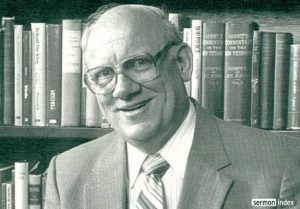
Popular and prolific Bible teacher Warren Wiersbe died on the evening of May 2, 2019, at the age of 89.
Warren Wendel Wiersbe was born on May 16, 1929, the third child of Fred and Gladys Anna (Forsberg) Wiersbe, in East Chicago, Indiana (25 miles southeast of Chicago). At that time, the steel town of East Chicago was the most industrialized city in the United States. His mother was of Swedish descent, and his father was of German descent. He was a lactose-intolerant milkman.
Wiersbe traced his conversion to May 1945 during high school sophomore. Just before his sixteenth birthday he attended a Youth for Christ rally and heard the ministry’s first full-time evangelist, 26-year-old Billy Graham. Though he was raised in the church and had attended Vacation Bible School, he trusted in Christ for the first time that night in response to Graham’s altar call.
A few years later, the president of Youth for Christ, Torrey Johnson, asked him what he wanted to do with his life. Wiersbe responded, “I wanted to go to school and get some Bible training and then preach the gospel.” Johnson responded: “Young man, find the one thing you do that God blesses, and stick with it! Around that time, Wiersbe later wrote, “I had developed an insatiable appetite for the Word of God, and I wanted to study and understand the Bible more than anything else in all the world.” He began acquiring and using his first books: the Scofield Reference Bible, Strong’s Concordance, Cruden’s Concordance, Smith’s Bible Dictionary, The Christian Worker’s Commentary by James M. Gray, Notes on the Pentateuch by C. H. MacIntosh, using tools from a dispensational perspective.
After attending Indiana University in Indianapolis for a year and then Roosevelt University in Chicago, Wiersbe enrolled at Northern Baptist Theological Seminary in Lombard, a northwest suburb of Chicago. He entered a five-year program that enabled him to get a college degree and seminary degree at the same time. As a seminary student, he was ordained in 1951 and began serving as pastor of Central Baptist Church, a blue-collar, 150-member neighborhood church in East Chicago. In June of 1953, he received his bachelor of divinity degree from Northern and married Betty Warren, whom he had met at Northern. (She was a librarian, and he practically lived in the library.) Together they had four children—two boys (David and Robert) and two girls (Carolyn and Judy). He once said of marriage: “Getting a wife is something like being saved. You make a decision and then you discover you’ve been chosen. And this is what happened. We just knew we were made for each other.”
In 1957, he left his pastorate at Central to become Director of the Literature Division for Youth for Christ International.
From 1961 to 1971 he pastored Calvary Baptist Church of Covington, Kentucky, just across the river from Cincinnati, Ohio. A local Cincinnati radio stations broadcast his Sunday sermons as the “Calvary Hour.” His Sunday During his tenure the church grew from a capacity of 800 people to one that could hold 2,000 worshipers.
In 1971 he received a call from the famed Moody Memorial Church in Chicago, succeeding George Sweeting, who became the president of Moody Bible Institute. Wiersbe’s sermons were featured on Moody’s “Songs in the Night” national radio program. Wiersbe served at Moody from 1971 to 1978, during which time he wrote for Moody Monthly, penning the “Insight for the Pastor” column, where he offered not only practical theology counsel but also wrote biographical sketches of noted figures in church history, which formed the basis for his books Listening to the Giants (1976) and Walking with the Giants (1980). Each of the entries included bibliographic information for further reading—a feature that encouraged and guided many pastors to explore primary sources for themselves. Phil Johnson, Executive Director of Grace to You, writes: “The backbone of my library today consists of books he introduced me to. He sparked my interest in Lloyd-Jones, the Puritans, and preaching—among other things.”
During his time in Chicago, Wiersbe also served as board chairman for the Slavic Gospel Association.
The staff at Moody Church quickly discovered Wiersbe’s sense of humor. He recalled:
God has a sense of humor. If you don’t believe that, go to the shopping mall, sit there and look at the people. It will convince you that God has a sense of humor. Humor is based on contradiction, seeing the other side of a situation. In one of the churches I pastored, we would have our staff meeting on Monday morning. We’d spend the first twenty minutes laughing over what happened the day before. Because people are people and situations are situations. I remember the Sunday morning at Moody Church when John the Baptist came in. This guy came in wearing a white robe and carrying a big pole and he said he was John the Baptist. We knew he was a fraud because he had a head.
Beginning in 1978, Wiersbe began teaching practical theology classes at Trinity Evangelical Divinity School and authored materials for a DMin course on “Imagination and the Quest for Biblical Preaching,” used at both Trinity and also Dallas.
In 1980 the Wiersbes moved to Lincoln, Nebraska, where he became Bible teacher at Back to the Bible Radio Ministries. In the course of the move, Mrs. Wiersbe told the real estate agent, “We are looking for a library with a house attached.” Their house would eventually have the entire basement devoted to Warren’s collection of more than 10,000 books. During that time he wrote a bi-weekly column for Christianity Today. From 1984 to 1990 he served as general director of Back to the Bible.
In 1995, Wiersbe became writer in residence at Cornerstone University in Grand Rapids, Michigan, and was appointed distinguished professor of preaching at Grand Rapids Theological Seminary.
In 1997, he wrote an autobiography entitled Be Myself: The Autobiography of a Bridge Builder. (His grandson Don Jacobsen explains the bridge-building metaphor here.)
Throughout his career, Wiersbe authored more than 150 books. His most famous series was the BE series of expositional commentaries, which covered the the entire New Testament and most of the Old Testament, from Genesis [Be Basic (Genesis 1–11); Be Authentic (Genesis 12–50) to Revelation (Be Victorious).
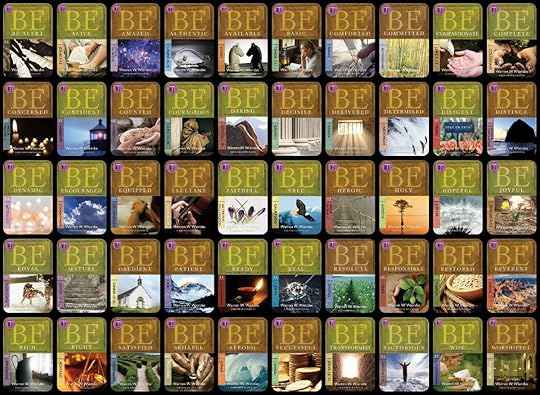
In an interview late in life, he reflected on his lack of physical strength growing up and how the Lord was preparing him for something different.
My early childhood was one of difficulty. Not because of my family, although being the baby of the family is not easy. Both of my brothers were very athletic, very mechanical, my father was quite mechanical and I was that 65 pound weakling that Charles Atlas used to talk about in his advertising. So I spent my early days in the library. Not the baseball field but the library. But apparently this was God’s plan because I learned to read, to enjoy reading and grew up some what of an introvert, some what of a recluse and yet God had His plan.
In another interview, he said:
Writing to me is a ministry. I’m not an athlete, I’m not a mechanic. I can’t do so many of the things that successful men can do. But I can read and study and think and teach. This is a beautiful, wonderful gift from God. All I’m doing is using what he’s given to me to teach people, and to give glory to the Lord Jesus Christ.
He continued:
When you learn the joy and the privilege of Bible study, you don’t have to be paid to do it. You don’t have to be pushed at doing it, and scolded. No, no, no. It’s a privilege. It’s a marvelous, glorious privilege. You may not see it, you may not know it. But others will know that you’re walking in the light. Blessed is the man that God blesses from the Word, because that is going to last forever.
April 30, 2019
Introducing Biblical Theology Workshops for Women: An Interview with Nancy Guthrie

Theologian Michael Horton once wrote:
Nancy Guthrie is one of the best teachers of Scripture I’ve ever heard or read. Her style—even in writing—is conversational. It’s like you’re sharing a cup of coffee while tracing the central motifs of the biblical story from Genesis to Revelation.
Nancy is the author of a Bible study series on Her most recent book, Better Than Eden: Nine Ways the Bible’s Story Changes Everything about Your Story, shows how biblical theology can shape our everyday life.
Now, she’s taking this teaching on the road through workshops in churches, criss-crossing the country for nine months in order to help women discover a love for biblical theology.
I recently caught up with her to ask her some questions about where, when, why, and how she is doing this.

What do we mean by “biblical theology”?
When people hear the term “biblical theology,” they often think we are talking about a theology that is biblical as opposed to unbiblical. But really we’re talking about a way of understanding and approaching the Bible that recognizes that even though the Bible is made up of various kinds of literature and was written down over centuries by 40 human authors, it is really telling one cohesive story about what God is doing in the world through Christ. We can trace the Bible’s story from Genesis to Revelation through the development of a number of central themes that communicate a coherent message about the person and work of Christ.
Perhaps another way to think about biblical theology is to think of it in contrast to its important companion, systematic theology. In systematic theology, we ask what the whole of the Bible has to say about a particular topic, such as sin, justification, the Holy Spirit, the nature of God, or humanity, and put it into a coherent summary. Biblical theology, then, is more about tracing particular themes that develop in the story of the Bible from creation to consummation, such as kingdom, sacrifice, feasting, or temple.
Why should we study biblical theology?
Because it is an essential but often neglected aspect of understanding the Bible. As someone who grew up in Sunday school, studied Bible in college, had a career in Christian publishing, and spent years in Bible Study Fellowship as an adult, when I began to hear preaching and teaching that was saturated in biblical theology, I realized I needed to go back to kindergarten in terms of understanding the Bible. I wanted to understand it in the way Jesus taught it to his disciples when “beginning with Moses and all the Prophets, he interpreted to them in all the Scriptures the things concerning himself” (Luke 24:27).
I find that people who discover biblical theology have a new excitement about the Scriptures. A number of years ago I was teaching a study of Genesis in my church when one of the discussion group leaders, a godly older woman, came and sat down beside me. “How come I’ve never been taught this before?” she said with tears in her eyes. She was beginning to recognize that, as many years as she had spent studying the Bible, she had never seen how the story of the Bible fits together in a way that is centered on the person and work of Christ from Genesis to Revelation. She was seeing and adoring Christ in new ways. Her tears were for all of the lost years of approaching the Bible in lesser ways.
What can biblical theology do for us? In other words, what’s the payoff? How will our lives be different for having biblical theology in it?
When we are familiar with the major themes that run throughout the whole of the Bible, and then see one of these themes arise in a text we’re studying, it gives us insight that guides us into the Holy Spirit-intended meaning of the text. It helps us to appropriately connect that text to the person and work of Christ so that we get to the gospel, rather than mere self-help or legalism.
Biblical theology helps us to discover what God intends for us to grasp as we read his Word so that we are less likely to impose our agenda on it. For example, as we trace the theme of the tabernacle and temple, we discover how important it is to God to dwell with his people. This prompts us to orient our anticipation of the future toward God dwelling with us, rather than simply longing for escape from this world. When we explore the theme of sacrifice, the principle of substitution is brought before us again and again. This underscores the nature of the atonement and guards us from diminishing or forsaking this core truth.
Biblical theology also helps to correct sentimental notions of the future God is preparing for us. For most of my life, my understanding of the trajectory of the Christian life was that we are urged to put our faith in Christ now so that he will accept us into heaven when we die. But when we more fully understand the story the Bible is telling, we begin to anticipate more fully the way God intends to bring the story to a consummation. It will not end with a conclusion, but rather, a new beginning in the new heaven and new earth.
So what has prompted you to launch this series of biblical theology workshops across the country for women? What do you hope to accomplish?
I think there are a lot of women in our churches who wish they had the “want to” to read and study their Bibles. But they’re often bored by their Bibles or intimidated by their Bibles. They sense there is more to what they are reading than they are grasping, but they’re not sure how to get at that deeper meaning. I think developing this basic skill of seeing the themes woven throughout scripture equips us to grasp this deeper meaning. My ultimate aim, however, is to help women see Christ through the various angles of biblical themes, so that they will love and admire him more. That is the effect that biblical theology has had on me.
Can you tell us where, when, and how these workshops will take place?
At this point we have 15 workshops scheduled around the country for fall 2019 and spring 2020. Over a Friday night and Saturday morning or an all-day Saturday workshop, we’ll review the key events of the Bible’s story and the major sections of the Bible. I’ll demonstrate telling the story of the Bible through the lens of a particular theme. We’ll work together on tracing a few themes through the various sections of the Bible. Then we’ll look at the opening of each of the Gospels and discover how a growing understanding of major themes adds to our understanding when we see those themes arise in smaller parts of the Bible.
Date
City/State
Host Church/Seminary
September 14, 2019
Houston, TX
Christ the King Presbyterian Church
September 20-21, 2019
Louisville, KY
Sojourn Church
September 27-28, 2019
Orlando, FL
Reformed Theological Seminary Orlando
October 5, 2019
Wake Forest, NC
Southeastern Baptist Theological Seminary
October 12, 2019
New Orleans, LA
Lakeview Christian Center
November 2, 2019
Grand Rapids, MI
First Byron Christian Reformed Church
January 24-25, 2020
Atlanta, GA
Perimeter Church
February 1, 2020
Birmingham, AL
Briarwood Presbyterian Church
February 8, 2020
Jackson, MS
First Presbyterian Church
February 21-22, 2020
Greenville, SC
First Presbyterian Church
February 29, 2020
Kansas City, MO
Midwestern Baptist Theological Seminary
March 6-7, 2020
Chattanooga, TN
First Presbyterian Church
March 28, 2020
Tulsa, OK
River Oaks Presbyterian Church
April 4, 2020
St. Louis, MO
Chesterfield Presbyterian Church
May 2, 2020
Denver, CO
Park Church Denver
All of the churches and seminaries hosting a workshop have agreed to open it up to whoever would like to come. Some are more likely to fill the number of available seats with their own members than others, so I encourage women who are interested to register early. And I’m encouraging women who are not in a city where a workshop is being held to put together a group and make a girls’ trip out of coming to a workshop in another city.
Are you concerned that “biblical theology” might sound intimidating or academic to some?
Oh, I hope not! All of us who are seeking to understand God are theologians. And we can all become better theologians from wherever we are now. I’m gearing the material to reach the average woman in the church, seeking to make it clear and accessible for her, as well as stretching for those who are more adept with their Bibles. The sessions will be interactive, with hands-on small group work in the text, and I hope they will be a lot of fun too.
I did a trial run of the workshop last fall at Austin Stone Church in Austin, Texas. We had 450 women in the room, and it was so much fun to get to watch and listen to the buzz of those women working together in groups, poring over their Bibles. Honestly, the time together went so quickly, was so interactive, and so much fun. I sensed that the women left encouraged and excited about what they learned, and were anxious to put it into practice.
What would you say to pastors about the workshop?
I would say that as your women know their Bibles better, they’ll be more engaged with your sermons, better equipped for teaching others in your church, and more in love with Christ. So I hope pastors will send the registration link to women in their churches—especially those who are teaching in women’s Bible studies, working with youth, and teaching children—telling them that he would love to see them attend (and perhaps that the church is willing to help them financially to attend). I find that pastors rarely grasp how much a word of encouragement means to the women in their church who are seeking to grow in their Bible skills and understanding.
For more information, go to the Biblical Theology Workshop for Women homepage and register here.
Why Does Doctrine Matter Anyway? Kevin Vanhoozer’s Answer

Theologian Kevin Vanhoozer:
Why does doctrine matter?
Primarily because without it, we could not answer Jesus’s question to his disciples, “Who do you say that I am?” (Matt. 16:15).
Christian doctrine sets forth in speech
who Jesus is (Christology),
why he had to suffer (sin),
how his death on the cross effected salvation (atonement),
how we relate to him (pneumatology),
how we benefit from his death (soteriology),
how the Spirit assembles the firstfruits of the new creation in Christ (ecclesiology), and
what happens when he returns (eschatology).
In order to say who Jesus is, we also need the doctrines of
God,
the Trinity, and
creation,
because his story does not start with his birth to Mary, but with his eternal fellowship with the Father in the Spirit and with all things being made through him.
Finally, because Jesus Christ is true God and true man, we also need to say something about the doctrine of
humanity.
Virtually every topic in systematic theology is necessary if we are to respond rightly to Jesus’s question.
— Kevin J. Vanhoozer, Hearers and Doers: A Pastor’s Guide to Making Disciples through Scripture and Doctrine (Lexham, 2019), xxii–xxviii. [My bullet points in the formatting.]
April 23, 2019
The Abolition of Man (Like You’ve Never Seen It Before)

Ken Myers—of Mars Hill Audio renown—is under contract to write a book for Crossway on C. S. Lewis’s three-lecture masterpiece, The Abolition of Man.
Political philosopher J. Budziszewski once wrote that The Abolition of Man is “perhaps the greatest work on natural law in the twentieth century.” (He adds that “most scholars of natural law have never heard of it.”)
For those who enjoy audiobooks, The Abolition of Man on Audible is quite enjoyable, narrated by Douglas Gresham, who was a stepson to Lewis and was 18 years old when Lewis died in 1963.
For those who want to engage the arguments of the book in creative, visual way, you can watch three “C. S. Lewis Doodle” videos below.
April 22, 2019
Ben Shapiro Sits Down with Stephen Meyer to Talk about God, Darwin, and Intelligent Design

Stephen Meyer, director of the Center for Science & Culture at the Discovery Institute, is the author of Darwin’s Doubt and Signature in the Cell, as well as a co-editor of Theistic Evolution.
In the above video, Ben Shapiro sits down for an hour-long conversation with Meyer.
Shapiro—who prepares well for such interviews—covers some of the key claims in Meyer’s previous books and allows him to preview the arguments for his next book, The Return of the God Hypothesis, which his publishers summarizes as follows:
The New York Times bestselling author of Darwin’s Doubt and Intelligent Design scholar presents groundbreaking scientific evidence of the existence of God, based on breakthroughs in physics, cosmology, and biology.
In 2004, Stephen C. Meyer, one of the preeminent scientists studying the origins of life, ignited a firestorm of media and scientific controversy when a biology journal at the Smithsonian Institution published his peer-reviewed article advancing the theory of Intelligent Design. Then, in his two bestselling books, Signature in the Cell and Darwin’s Doubt, he helped unravel a mystery that Charles Darwin did not address: how did life begin? and offered further scientific proof to bolster his arguments on the history of life and our origins, concluding that life was designed.
In those previous books, Meyer purposely refrained from attempting to answer questions about “who” might have designed life. Now, in The Return of the God Hypothesis, he brings his ideas full circle, providing a reasoned and evidence-based answer to the ultimate mystery of the universe, drawn from recent scientific discoveries in physics, cosmology, and biology.
Meyer uses three scientific points to refute popular arguments put forward by the “New Atheists” against the existence of God:
1. The evidence from cosmology showing that the material universe had a beginning.
2. The evidence from physics showing that, from the beginning, the universe was been “finely tuned” to allow for the possibility of life.
3. The evidence from biology showing that since the universe came into being, large amounts of genetic information present in DNA must have arisen to make life possible.
In analyzing the evidence from these three fields, Meyer reveals how the data support not just the existence of an intelligent designer of some kind—but the existence of a theistic creator.
April 21, 2019
How It Felt to Hear the Good News for the First Time
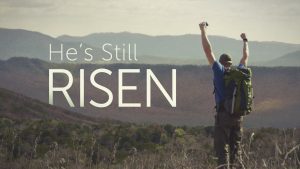
It is the greatest and truest news in all the world:
Jesus is risen!
This is how his followers felt and we should still feel today.
April 20, 2019
A Poem for Holy Saturday: George Herbert’s ‘Sepulchre’
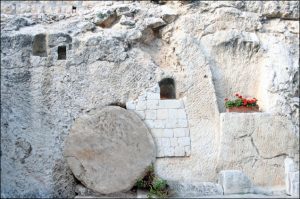
George Herbert (1633):
Oh blessed body! Whither art thou thrown?
No lodging for thee, but a cold hard stone?
So many hearts on earth, and yet not one
Receive thee?
Sure there is room within our hearts good store;
For they can lodge transgressions by the score:
Thousands of toys dwell there, yet out of door
They leave thee.
But that which shows them large, shows them unfit.
Whatever sin did this pure rock commit,
Which holds thee now? Who hath indicted it
Of murder?
Where our hard hearts have took up stones to brain thee,
And missing this, most falsely did arraign thee;
Only these stones in quiet entertain thee,
And order.
And as of old, the law by heav’nly art,
Was writ in stone; so thou, which also art
The letter of the word, find’st no fit heart
To hold thee.
Yet do we still persist as we began,
And so should perish, but that nothing can,
Though it be cold, hard, foul, from loving man
Withhold thee.
In his book A Year with George Herbert: A Guide to Fifty-Two of His Best Loved Poems, Jim Scott Orrick identifies the thesis of this poem as follows:
Our hearts are as cold and hard as stone, but stone cannot prevent Christ from loving us.
Professor Orrick provides a paraphrase and some contextual notes for the poem as follows:
It is not for lack of room that human hearts refuse to receive Christ. We obviously have plenty of room; the horde of sins and worldly pleasures that dwell in our hearts demonstrate that we have room.
All those sins and worldly pleasures render our hearts unsuitable to receive Jesus.
This rock [the sepulchre] has committed no sins.
We, on the other hand, have attempted to kill you with stones. [Cf. John 10:31]
(The recollection of the frenzied mob at Jesus’s trial renders the silence and order of the tomb all the more profound.)
(The Ten Commandments were written in stone by the finger of God.)
As under the Old Covenant the word of God was held in stone, so now you, the Word of God incarnate, are held in stone.
Human hearts continue to be as hard as those that rejected you during the days of your incarnation, and this hardness of heart would continue in us and ultimately condemn us if it were not for your rock-smashing love.
This sepulchre, though made of stone, cannot hold you in, and human heart, though also stony, cannot keep you out.
Justin Taylor's Blog
- Justin Taylor's profile
- 44 followers



